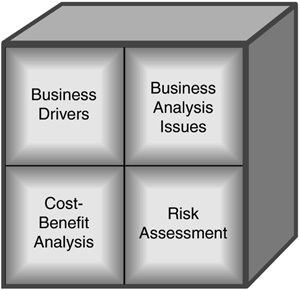Business Justification
| Since it usually costs millions of dollars to create a BI environment, an organization considering such an initiative needs a BI strategy and a business justification to show the balance between the costs involved and the benefits gained . A BI decision-support initiative provides numerous benefits ”not only tangible benefits such as increasing the sales volume but also intangible benefits such as enhancing the organization's reputation. Many of these benefits, especially the intangible ones, are difficult to quantify in terms of monetary value. Nevertheless, you should prepare an itemized and detailed list of benefits in order to measure them against the high cost of a BI implementation. Although the general benefits of BI decision-support initiatives are documented widely, they cannot justify your BI initiative unless you can associate these benefits to your organization's specific business problems and strategic business goals. Justification for a BI decision-support initiative must always be business-driven and not technology-driven. It would not be wise to set up an expensive BI decision-support environment only to experiment with new technology. Therefore, each proposed BI application must reduce measurable "business pain" (problems affecting the profitability or efficiency of an organization) in order to justify building the application. It is best to start the business justification process by identifying the organization's strategic business goals. The BI decision-support initiative as a whole, and the proposed BI application specifically , should support those strategic business goals. This enables the ongoing viability of the BI decision-support environment. If BI applications are built without a good business justification, management will most likely not support the effort. The business representative should be primarily responsible for determining the business value of the proposed BI application. The information technology (IT) department can become a solution partner with the business representative and can help explore the business problems and define the potential benefits of the BI application. IT can also help clarify and coordinate the different needs of the varied groups of business people (knowledge workers, business analysts, business executives). For example, there could be different requirements for:
With the business representative leading the business case assessment effort, IT staff can assist with the four business justification components (Figure 1.1).
Figure 1.1. Business Justification Components The next four sections in this chapter explore each of these components. |
EAN: 2147483647
Pages: 202
